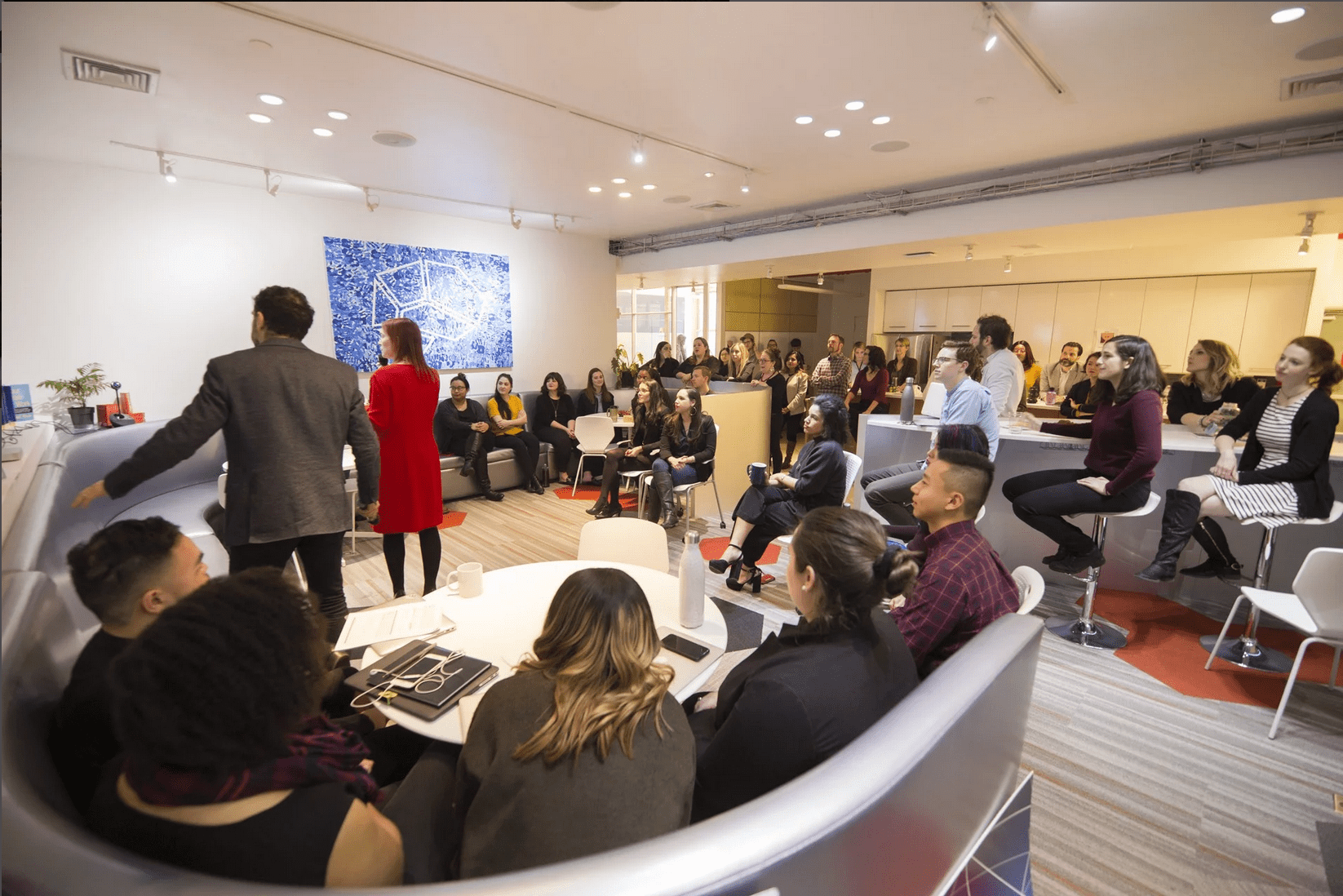The short answer: they’re made. At the NeuroLeadership Institute, we think up to 98% of people have the potential to become allies.
But we need to get into the long answer to explain why we think that way: we need to understand what makes a person an ally.
Making an ally: Knowing and doing
At NLI, we define an ally as someone who is aware of their advantaged position in a specific domain and uses it to actively support and include people in less advantaged positions.
No, you don’t have to remember the definition verbatim, but you do need to understand the concept. To be an ally, one needs to meet both criteria: one has to be aware of their advantageous position and has to actively work on supporting and including people in less advantaged positions.
We often think being aware of our advantageous position is sufficient, but what matters most is action. When you sense someone is struggling because that person happens to be at a disadvantaged position compared to you, you need to do something to be an ally. Simply being aware and feeling guilty or bad is not enough. After all, if you aren’t helping that person, does it really matter to that person?
A Case Study: Knowing without Doing
Let’s say you are a co-leader in a meeting, and you notice that whenever a female participant offers a suggestion, she is ignored by the other leaders. However, when a male participant offers the same suggestion a few minutes later, the team leader acknowledges the merits of his suggestion and thanks him. If you don’t like how the female participant’s suggestion was ignored, but you fail to acknowledge her contribution by speaking up — something you could easily do as a co-leader — then you are not being an ally. Feeling bad may make you a compassionate person, but to be an ally, you needed to speak up and acknowledge her contribution. You needed to also act.
And now that we have a better picture of what it means to be an ally, let’s now reconsider the question once more: are allies made or born? Let’s see how both parts of our definition hold up with the short answer we provided in the beginning.
Being aware of others’ struggles with empathy: Knowing
In the example we provided above, we assumed that you were aware of the fact that your female coworker’s efforts were not acknowledged because of her gender. But what if another person also noticed the same thing but didn’t realize what’s going on?
Indeed, unless we are constantly trying to see the struggles others face daily, we are most likely going to miss our chances of being an ally. But that is something — like our awareness of social injustices — that can be improved with training. For example, in one of our recent podcasts, Dr. Lisa Feldman Barrett relayed how exposure to situations through videos and virtual reality has the potential to heighten our social awareness.
But what if a person lacks empathy and fails to understand others’ struggles? Can such a person be taught to be more empathetic?
Science says the answer is yes: empathy can be taught. It has been shown, for example, that although medical training can diminish empathy, physicians can be taught to be more empathetic with their patients. That finding suggests that a person who lacks empathy can be taught to be more empathetic, which means that person has the potential to become an ally.
Indeed, the percentage of people who could become allies — the number we mentioned in the beginning — came from a study that suggests that 98% of people have the ability to empathize. Except the people with psychopathic tendencies, most people can empathize and thus, could become allies.
Acting on the awareness: Doing
As we explained before, just because a person has awareness and empathy does not automatically make them an ally. One has to act with the intention of lessening the struggles or struggles of others. That, once more, can be taught as well. Indeed, our recent learning solution on allyship — ALLY — is based on the idea that like any other skills, one can learn how to become an ally. Specifically, we focus on training three habits — identify inequity, increase equity, and drive change — that would help employees to become allies.
Indeed, the data from our pilot studies show some encouraging results. Eighty-percent of the people who completed our training module reported to have acted as allies frequently in the weeks that followed their training: 1-3 times per week, they helped amplify the voice of someone not being heard.
And there you have it: because all the features that make a person an ally can be taught, allies are made, and an overwhelming majority of people could become allies with proper training.
But let’s not get carried away congratulating ourselves thinking that once we’re an ally, we’re always an ally. Being an ally means staying steadfast in our efforts to help alleviate the struggles of those in less advantaged positions. All the time. Because if we are not steadfast, we might not be there when a person in a less advantaged position needs our help and support. There is no credential we can have that makes us an ally, nor is there any quality that precludes us from becoming one. It’s about remaining steadfast and acting consistently.
[action hash= “a970c252-bb22-42f5-94a3-b51b4777ca4a”]






